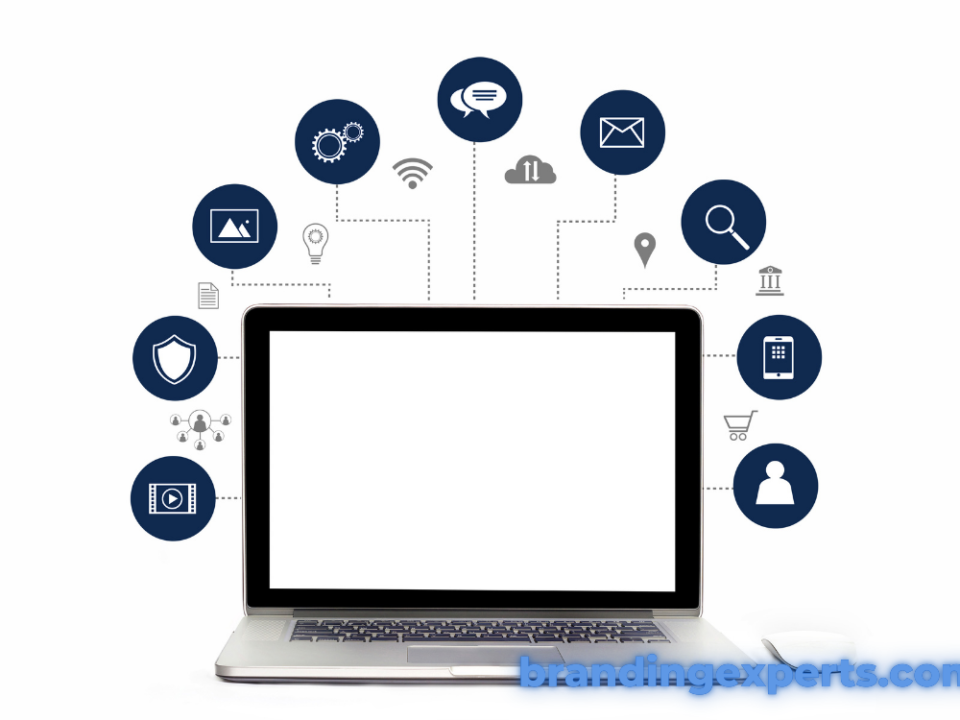
What is a Brand Strategist
October 6, 2023
What Is Affinity Marketing, and How Can It Boost Your Business_
October 6, 2023In today’s dynamic business landscape, customer-centricity is more than just a buzzword; it’s a strategic imperative. A customer-driven marketing strategy places the customer at the centre of all decision-making processes. It involves deeply understanding customer needs, preferences, and behaviours to tailor products, services, and marketing efforts accordingly. This approach goes beyond traditional marketing by fostering meaningful and lasting relationships with customers. In this context, we explore the concept of a customer-driven marketing strategy, its significance, and the key principles that underpin its successful implementation.
Understanding Customer-Driven Marketing Strategy
A customer-driven marketing strategy is a business approach that prioritises the needs, preferences, and experiences of customers as the focal point of all marketing efforts. It involves in-depth market research, data analysis, and engagement to gain a profound understanding of customer behaviour and expectations. This strategy is crucial for businesses because it empowers them to create tailored products and services that genuinely resonate with their target audience. By aligning marketing initiatives with customer insights, businesses can build stronger brand loyalty, enhance customer satisfaction, drive sales growth, and ultimately thrive in a competitive marketplace.

Key Steps to Developing a Successful Influencer Marketing Campaign

- Set Clear Objectives: Define your campaign goals, whether it’s increasing brand awareness, driving sales, or boosting engagement.
- Audience Research: Identify your target audience and choose influencers whose followers align with your ideal customer demographic.
- Select the Right Influencers: Carefully vet potential influencers based on their content quality, engagement rates, and authenticity.
- Define Expectations: Clearly communicate your expectations, campaign guidelines, and compensation terms to the influencers.
- Content Strategy: Collaborate with influencers to create a content plan that resonates with your brand message and fits their style.
- Budgeting: Determine your budget for the campaign, considering influencer fees, content creation costs, and promotional expenses.
- Legal Compliance: Ensure all partnerships adhere to advertising and disclosure regulations, such as FTC guidelines.
- Performance Metrics: Establish KPIs to measure campaign success, such as reach, engagement, conversion rates, or ROI.
- Content Approval: Review and approve influencer-created content before it goes live to maintain brand consistency.
- Monitoring and Reporting: Continuously monitor the campaign’s progress, track metrics, and generate performance reports.
- Engagement and Community Management: Actively engage with the influencer’s audience, responding to comments, and building a community around your brand.
- Post-Campaign Analysis: Evaluate the campaign’s effectiveness against your objectives and gather insights for future improvements.
Utilising Customer Data for Informed Marketing Strategies
Businesses can gather and analyse customer data through various methods, such as surveys, website analytics, social media insights, and purchase history. By collecting demographic information, browsing behaviour, and preferences, companies gain valuable insights into their customers’ needs and behaviours. This data allows businesses to segment their audience effectively, tailor marketing messages, and personalise the customer experience. Moreover, data analysis tools and techniques enable the identification of trends, helping companies stay ahead of market shifts and competitors. In essence, leveraging customer data empowers businesses to develop customer-driven marketing strategies that resonate with their target audience, enhance engagement, and drive sustainable growth.

The Role of Customer Personas in Developing a Customer-Driven Marketing Strategy
Customer personas are fictional representations of your ideal customers, created based on real data and research. They play a crucial role in developing a customer-driven marketing strategy by providing a clear understanding of your target audience’s needs, preferences, and pain points. These personas help businesses segment their audience effectively and tailor marketing messages to specific groups, increasing relevance and engagement. By aligning marketing efforts with customer personas, companies can create content, offers, and campaigns that resonate with their audience, resulting in higher conversion rates and customer satisfaction. In essence, customer personas act as a guiding compass, ensuring that marketing strategies are centred around meeting the unique needs and expectations of customers.

Balancing Customer-Driven Marketing with Brand Identity and Values
Balancing customer-driven marketing with brand identity and values is essential for businesses to maintain authenticity and consistency in their strategies. While customer preferences and behaviours are central to marketing decisions, they should align with the core values and identity of the brand. This alignment ensures that marketing efforts resonate with the target audience without compromising the brand’s integrity. Businesses should identify areas where customer desires intersect with their values and brand identity, aiming to meet customer needs while staying true to their principles. By effectively managing this balance, companies can foster trust and loyalty among customers while staying authentic to their brand, ultimately driving long-term success.

Strategies for Personalised Marketing:
# Data Analysis: Utilise customer data, including purchase history, behaviour, and preferences, to tailor marketing messages and offers.

# Segmentation: Divide your customer base into distinct segments based on demographics, behaviours, or interests to create more relevant campaigns. # Customer Personas: Develop detailed customer personas that represent your target audience, allowing for more personalised content. # Behavioural Tracking: Use website and app tracking to monitor customer behaviour and provide personalised product recommendations. # Email Marketing Automation: Implement automated email campaigns triggered by customer actions, such as abandoned carts or product views. # Dynamic Content: Display different content, images, or offers on your website or emails based on customer characteristics or behaviour. # Personalised Recommendations: Provide product or content recommendations based on what similar customers have shown interest in. # Location-Based Targeting: Use geolocation data to send location-specific offers and information to customers. # A/B Testing: Continuously test different messages and offers to determine what resonates most with individual segments. # Feedback and Surveys: Collect customer feedback to understand their preferences and improve personalisation over time. # AI and Machine Learning: Employ artificial intelligence and machine learning algorithms to predict customer behaviour and recommend personalised content. # Loyalty Programs: Reward loyal customers with personalised offers and incentives based on their past interactions with your brand. Personalised marketing enhances the customer experience, increases engagement, and drives higher conversion rates by delivering messages and offers tailored to individual needs and preferences.
Enhancing Customer-Driven Marketing with Emerging Technologies:
Emerging technologies such as artificial intelligence (AI) and machine learning are revolutionising customer-driven marketing strategies. These technologies enable businesses to analyse vast amounts of customer data with unprecedented speed and accuracy. AI-driven algorithms can predict customer behaviour, preferences, and purchasing patterns, allowing companies to deliver highly personalised and timely marketing messages. Machine learning algorithms continuously adapt and optimise marketing campaigns, ensuring that each interaction with customers is more relevant and engaging. These technologies also enable the automation of routine marketing tasks, freeing up resources for creative and strategic efforts. In essence, AI and machine learning empower businesses to leverage customer data in real-time, resulting in more effective and customer-centric marketing strategies.

Measuring the Effectiveness of Customer-Driven Marketing:
To gauge the success of customer-driven marketing efforts, businesses can track a variety of metrics and Key Performance Indicators (KPIs). These include customer retention rates, which reflect the ability to keep existing customers engaged and satisfied. Conversion rates, such as click-through rates and conversion from leads to customers, provide insights into the effectiveness of campaigns. Customer lifetime value (CLV) is a critical metric that calculates the long-term revenue generated from each customer. Net Promoter Score (NPS) can assess customer loyalty and brand advocacy. Social media engagement metrics like likes, shares, and comments reveal the level of customer interaction with content. Additionally, tracking website traffic, bounce rates, and time spent on site helps evaluate the quality of online interactions. These metrics collectively provide a comprehensive view of how well customer-driven marketing strategies are resonating with the audience and driving business growth.

Conclusion: Embracing Customer-Driven Marketing Strategy
In today’s competitive business landscape, adopting a customer-driven marketing strategy is no longer an option but a necessity. Businesses that prioritise understanding their customers’ needs, preferences, and behaviours can build stronger connections, foster loyalty, and drive sustainable growth. By gathering and analysing customer data, creating detailed personas, and aligning marketing efforts with brand identity and values, companies can tailor their messages and offers to individual customers. The integration of emerging technologies like AI and machine learning further enhances personalisation and engagement. With a keen focus on metrics and KPIs, organisations can continuously refine their strategies, ensuring they remain customer-centric. Ultimately, a customer-driven marketing approach empowers businesses to not only meet but exceed customer expectations, creating a win-win scenario where customers feel valued and businesses thrive in the process.





